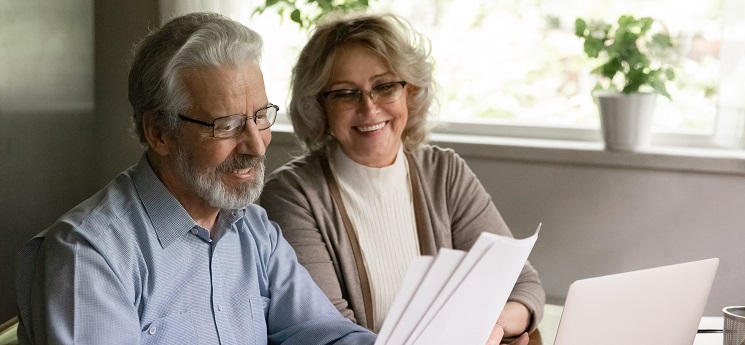Retirees need to rethink the way they invest their nest eggs, embracing risk and diversity if they want to maintain a ‘sufficient income for life’.
New research from retirement income experts Martin Currie Australia finds that retirement income portfolios with higher equity allocations – those that take on more risk – more often than not lead to sufficient income for life.
Today’s retirees need to buck past trends and look for sustainability of income, future income growth and diversification of income sources, rather than relying solely on risk-averse strategies.
They should also focus on achieving a high and stable franked income stream to achieve steady annual earnings and look to income growth for inflation protection and capital growth to manage longevity risk, says the group.
Sounds simple, right?
According to Reece Birtles, chief investment officer at Martin Currie Australia, it could be.
He says equity selection for a retiree portfolio differs from those in an accumulation phase, with income sustainability, monitoring of income growth and diversification of sources the most important considerations in retirement.
Explained: ETFs: What are they, why consider them and how to start investing now
“Retirees require a reliable income stream to replace the wages they received when they were working, so it is more important to focus on the actual dollar income generated over time, rather than the headline yield percentage,” he says.
Investing in high quality companies is key, says Mr Birtles.
As, too, is benchmark-unaware construction, maximising franking credits and the inclusion of inflation drivers designed for Australian retirees.
A benchmark unaware construction portfolio approach utilises research expertise to actively identify the best, risk-adjusted opportunities, often with assistance from an investment manager.
“The old view of the economic behaviour of retirees that most existing multi-asset retirement products assume is that when people get to 65 they automatically become more risk averse and should move away from risky, growth-style assets and move towards defensive assets,” says Mr Birtles.
“We do not agree.
“So-called low risk defensive assets have turned out to be low growth with high income volatility over the past decade.”
The group’s research found that assuming growth assets are ‘high risk’ and all defensive assets ‘low risk’ as the attractiveness of asset classes differs considerably when viewed through the lens of income volatility.
Read: Annuities give retirees a ‘licence to spend’, say experts
While Mr Birtles is intent on getting Aussie retirees the best outcomes for themselves, Liberal MP Jason Falinski is looking to retirees to help out Aussie businesses.
He says we needs more $100 million SMSFs to inject capital into start-up businesses, claiming Australia lacks risk capital and that industry superannuation funds are unlikely to delve into venture capital.
“That’s why I think we need more SMSFs in the $20 million to $100 million mark, where people are more engaged with their money and they will invest in, say, the next CSL, the next Cochlear, the next Atlassian,” says Mr Falinski.
His comments come on the heels of the AFR finding 27 of Australia’s biggest self-managed super funds hold more than $100 million each in concessionally taxed savings.
One mega-SMSF is worth around $544 million.
The top 100 SMSFs own $9.64 billion in total assets, prompting superannuation experts to point out the enormous tax concessions enjoyed by uber-rich SMSF members.
Mr Falinski sees a silver lining.
“Large SMSFs are what we need,” he says.
“Australia has always lacked risk capital. How many businesses have we funded in early stages but then go and make their money overseas?
“What we need more of is more smaller funds willing to have a go.”
The Retirement Income Review found 6000 of the country’s wealthiest super funds have more than $5 million each at a combined total of $90 billion.
These fund holders get more government support and tax concessions than support received by all low-income households combined.
Ian Silk, the outgoing chief executive of Australia’s biggest superannuation fund AustralianSuper, says mega-SMSFs prove there is “a genuine public policy issue” with regard to the integrity of the country’s financial systems.
Read: Australia’s biggest super fund set for massive change
“While there’s not many of them, there’s something about the integrity of the system here. Super operates in a concessionally taxed environment,” says Mr Silk.
“It’s clearly not operating fairly when you’ve got hundreds of millions in one SMSF that is clearly not being used for retirement savings.
“I don’t know whether there is any evidence that big SMSFs are investing in entrepreneurial capital.
“But if they are, then they can do it in a non-concessionally taxed environment. Industry funds are investing many hundreds of millions in venture capital.”
How risk-averse are you in retirement? Do you feel your savings are adequately diversified? What do you think about SMSFs being used to invest in Aussie start-ups? Do you believe the nation lacks equality in its financial systems? Why not share your thoughts in the comments section below?
If you enjoy our content, don’t keep it to yourself. Share our free eNews with your friends and encourage them to sign up.

